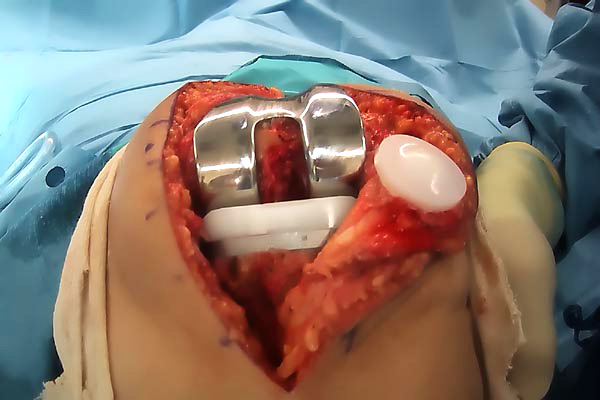Knee replacement surgery cost money but do we know what happens during the procedure? During the early 1970’s the knee was replaced with a hinge and anchored on to the tibia. While this was helpful it led to a few complications. Today the procedure is less invasive with only the damaged cartilage surface of the knee being replaced like a dental crown.
Knee cartilage is an important tissue in the human body. It takes the load weight off the entire body within its relatively small surface area. Sometimes due to trauma, overload or genetics there is damage done to this region. This can cause a painful sensation around the knee and can be corrected using surgery.
Pre-Surgery
The patient is advised to make lifestyle changes to help prepare them for the surgery. Regular exercise is important as physiotherapy is an important aspect of the recovery process. One is also advised to make lifestyle changes. This is in the form of weight loss before surgery. Reduced weight puts less strain on the knees which helps in the recovery process. Regarding the prices one can have a look at the surgery packages online to get a precise quote.
Surgery
Below is an account of one of the methods adopted for total knee replacement surgery
• The surgical procedure begins by making a single longitudinal incision on the patient’s leg. This can vary from eight to ten inches. Those using advanced techniques will have smaller incisions as these are less invasive.
• The knee cap is moved to the top/side to provide access to the tibia and femur. A precision instrument is then used to remove the bone and cartilage tissue.
• A spacer block is inserted between the tibia and femur to analyze various aspects such as ligament tension and knee alignment.
• A saw block is used to make the final cuts across the tibia and femur for inserting the prosthetics.
• A trial prosthetic is then placed to determine if the permanent prosthetics would allow a full range of motion. Drill holes may be used to improve their performance.
• Once the trial prosthetics perform satisfactorily, the permanent prosthetics are placed using bone cement. The bone cement is used to bind the prosthetics and may be organic or inorganic depending on make.
• A spacer is also used between the femur and tibia.
• The incision is closed after the surgeons are satisfied that the permanent prosthetics are working correctly.
Post-Surgery
The surgery can take anywhere between 1-2 hours after which the patient is required to stay in the hospital for further observation and recovery. After a couple of days, the patient is mobile enough to either be shifted back home or is transferred to the inpatient rehabilitation area. The recovery process can take anywhere between 1-3 months during which the patient is required to take part in intensive physiotherapy.
Complications
Like any other medical procedure, there are some associated risks that can lead to various complications. There are many issues that can arise such as nerve damage, instability, partial relief from pain and other medical complications. However, the most disruptive complications are infection and stiffness. Infections can lead to further complication and usually require another set of surgeries to rectify. Stiffness is another issue where the goal of the surgery is only partially achieved. However, it is to be noted that these are only the rarest or rare cases. Most of the surgeries are successful and have a positive impact on the patient’s life. Widely available in India the cost of knee replacement surgery is anywhere between 70,000 to 1 lakh rupees.



Be the first to comment on "What happens during total knee replacement surgery?"